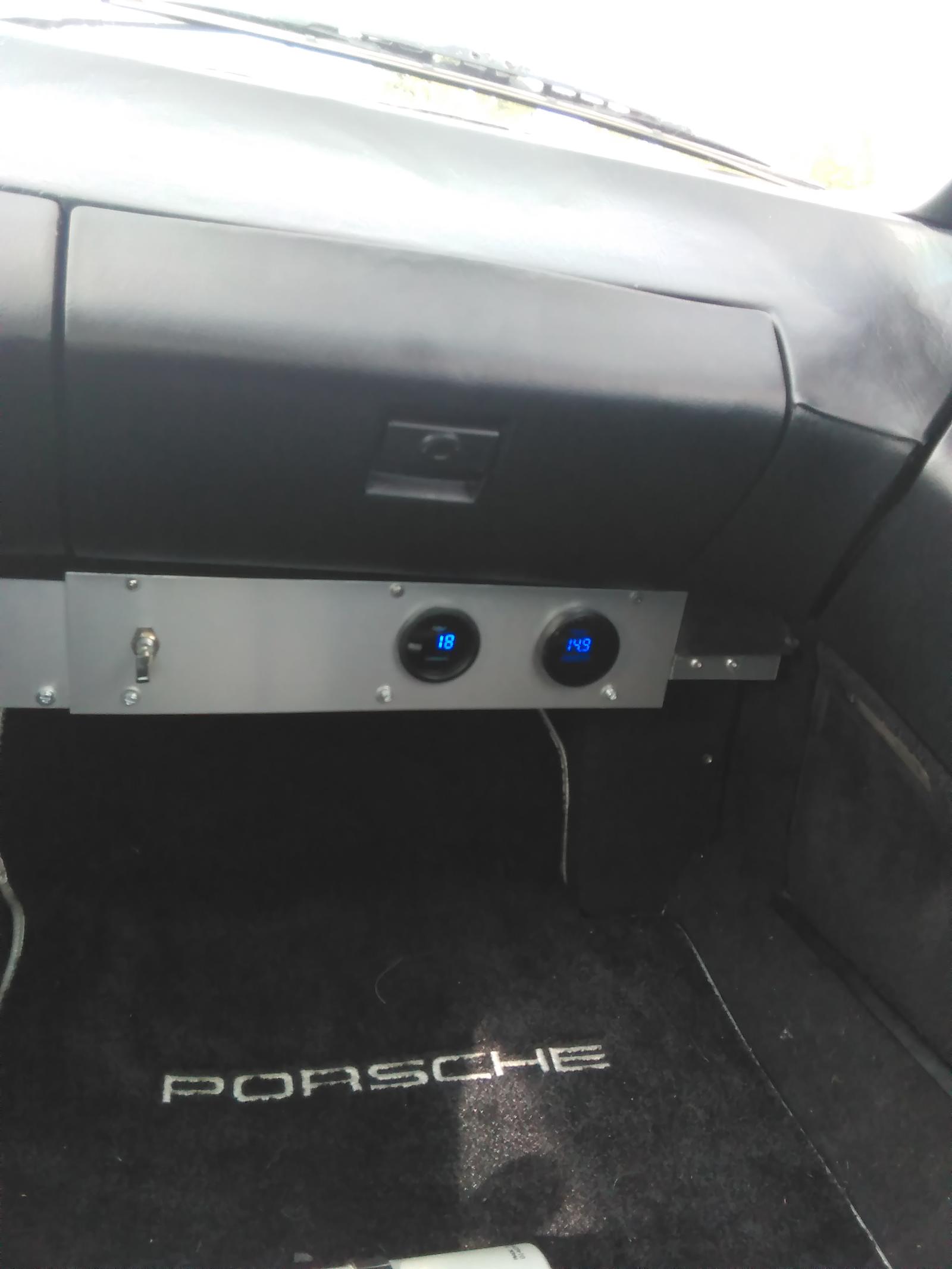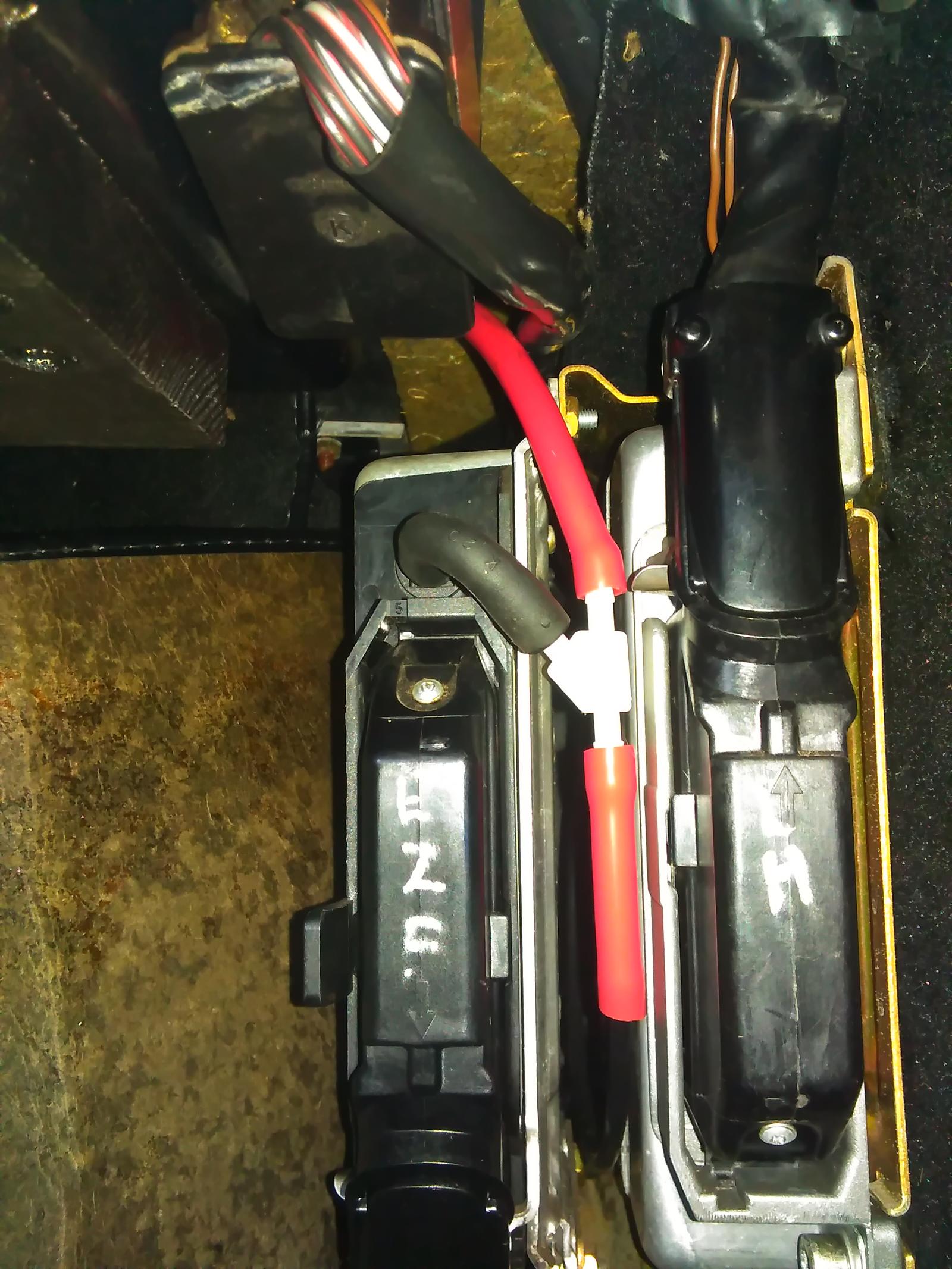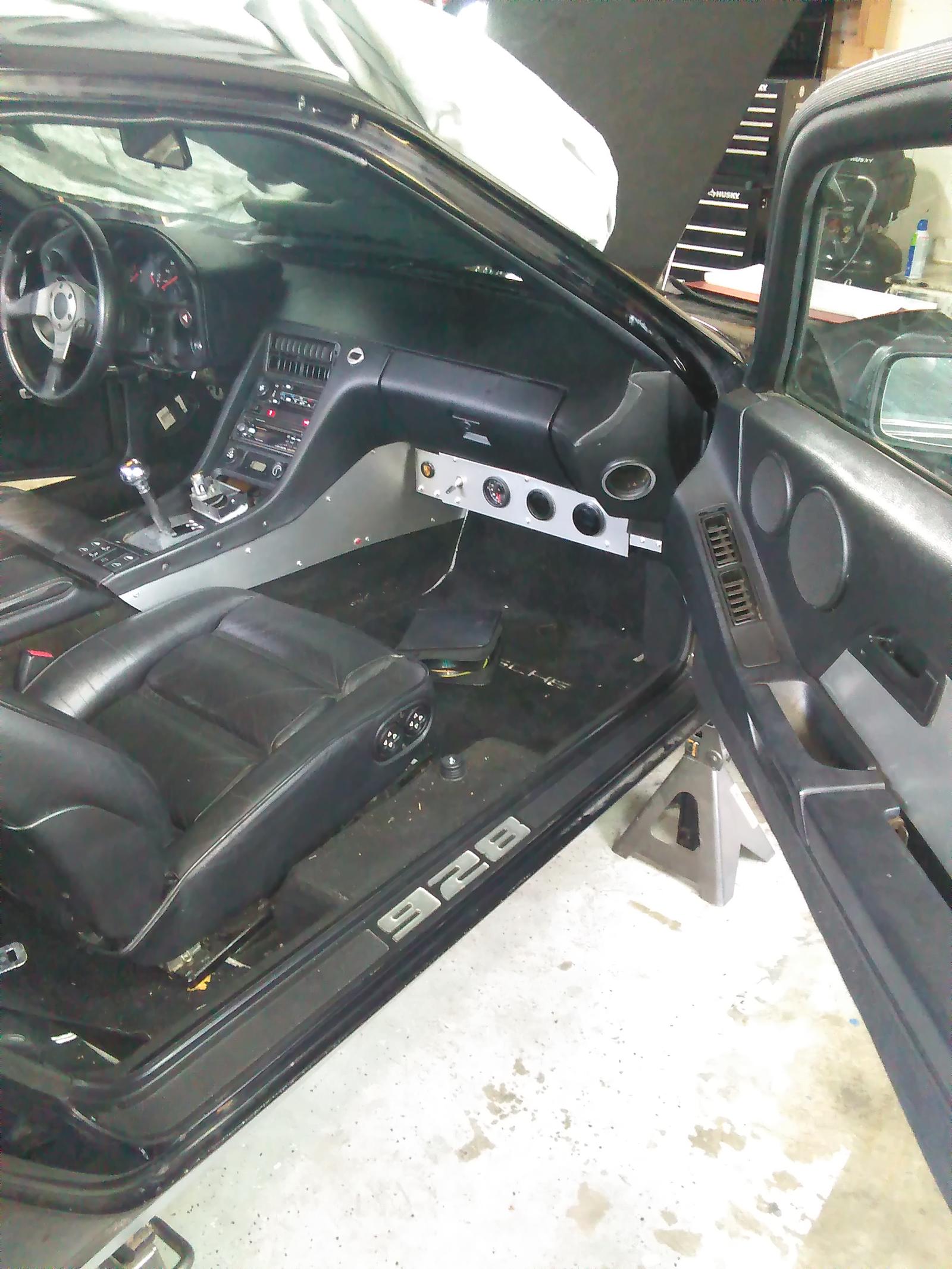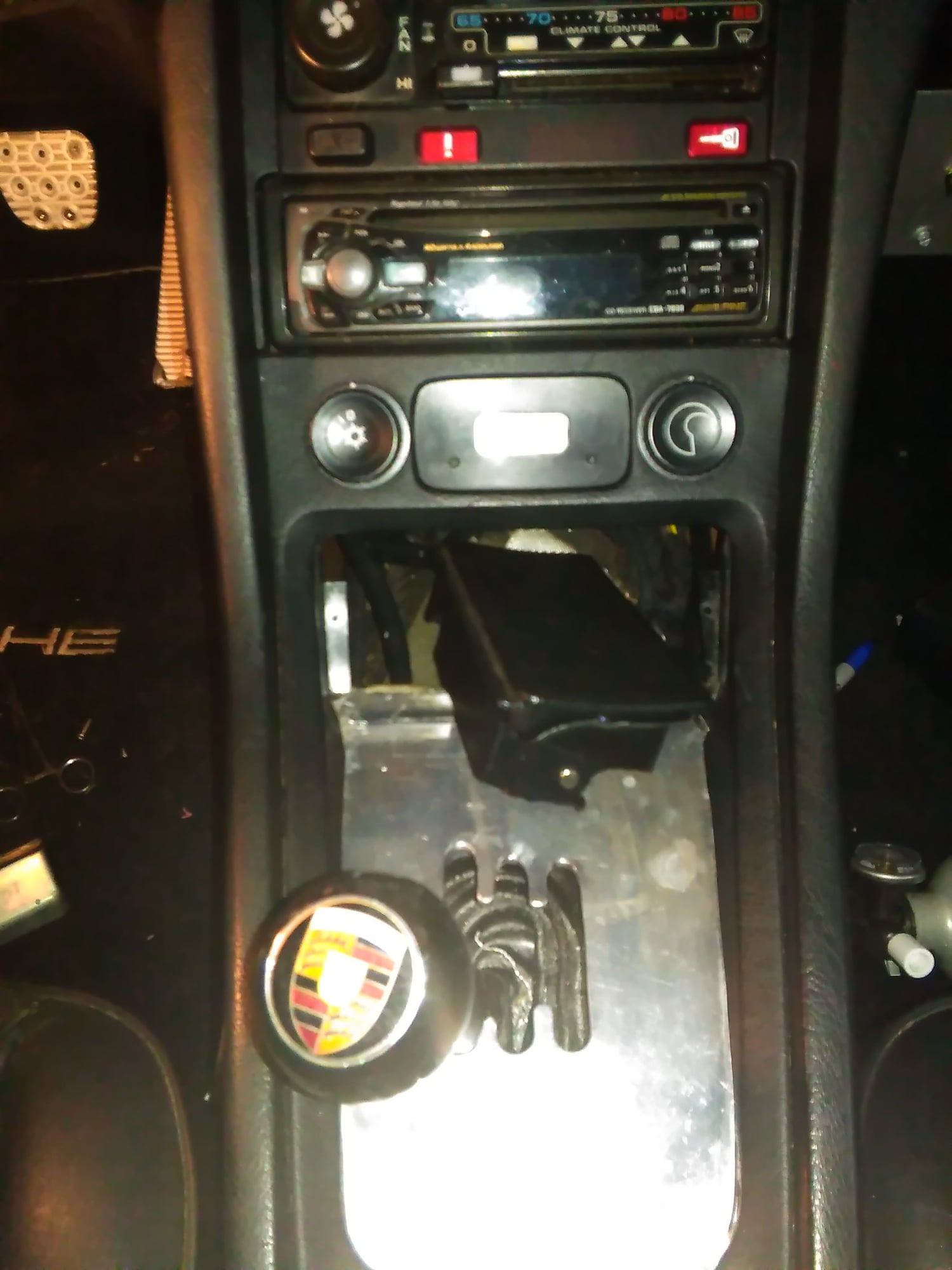Cabin Vacuum Gauge Readings
#1
Three Wheelin'
Thread Starter
Let's say, hypothetically, that I have a tough time not tinkering around on my car.
Let's also say hypothetically, that I recently deleted the passenger tray and fabricated a console for some gauges...
Yes, I know, but I'm never letting go of this car, and I can't get enough of the bare metal look -- so you can say I've made it mine forever.

The vacuum gauge is off a tee from the line that runs into the cabin for the EZF.
The car currently runs well, quite good really, with good AFR on the wideband...but I'm always paranoid of vacuum leaks and from a performance point of view the vacuum gauge sounded practical, or at least interesting...
So once buttoned up, I took the car out.
Maybe you guys can give me some feedback on interpretation... and overall engine health.
A. Good steady readings...18'' at idle, 17-22 driving around. Higher end of range at highway speed.
B. Throttle snap shows about 5-9'' loss, which comes back up to 24, then levels back 18-19''.
C. At WOT, system goes to zero vacuum. Now this requires more time and pedal in third...compared to fifth gear at 85 mph -- which takes very little pedal to bottom out vacuum. Is that normal WOT function? Concern?
D. The reading will fluctuate as RPM increases. I had read (in the Mustang forum, I think) that this can be a sign of leaky head gasket or valve, or even concern for a weak valve spring. My problem is that I don't have a lot of data yet, and the gauge is dynamic, and I'm driving... (the pic above, for example is on the move with the phone), AFR looks a little lean but my foot is coming off the pedal.
Anyway, that's the situation. Regards.
Let's also say hypothetically, that I recently deleted the passenger tray and fabricated a console for some gauges...
Yes, I know, but I'm never letting go of this car, and I can't get enough of the bare metal look -- so you can say I've made it mine forever.


The vacuum gauge is off a tee from the line that runs into the cabin for the EZF.
The car currently runs well, quite good really, with good AFR on the wideband...but I'm always paranoid of vacuum leaks and from a performance point of view the vacuum gauge sounded practical, or at least interesting...
So once buttoned up, I took the car out.
Maybe you guys can give me some feedback on interpretation... and overall engine health.
A. Good steady readings...18'' at idle, 17-22 driving around. Higher end of range at highway speed.
B. Throttle snap shows about 5-9'' loss, which comes back up to 24, then levels back 18-19''.
C. At WOT, system goes to zero vacuum. Now this requires more time and pedal in third...compared to fifth gear at 85 mph -- which takes very little pedal to bottom out vacuum. Is that normal WOT function? Concern?
D. The reading will fluctuate as RPM increases. I had read (in the Mustang forum, I think) that this can be a sign of leaky head gasket or valve, or even concern for a weak valve spring. My problem is that I don't have a lot of data yet, and the gauge is dynamic, and I'm driving... (the pic above, for example is on the move with the phone), AFR looks a little lean but my foot is coming off the pedal.
Anyway, that's the situation. Regards.
Last edited by Crumpler; 10-06-2016 at 12:18 PM.
#2
Rennlist Member
Not sure what the configuration is on your model year but I am puzzled as to why there would be vacuum to the EZK- something I am not aware of or is that a typo?
The later 928's like mine have two vacuum systems on the car, one is the passive reservour system that is used to open the flappy valve and the operate the HVAC system and the other is the "live" system but on my model year there is no feed of this line into the cabin. If there is such on your MY then something to learn here.
Regarding vacuum generated it is perfectly normal to pull a deeper vacuum when off throttle. As the throttle opens the vacuum decreases at the butterfly as the air rushes into the motor to spool it up. At max power rpm's there will be no measurable vacuum or very little to be more precise as there will be a small pressure drop through the plumbing from ambient to the butterfly.
At idle you should pull about 20 inches of vacuum [my 928 does]. If you blip the throttle and let the revs collapse there will be a transient wherein the vacuum will be a bit deeper until the system stabilises with the ISV. Remember, when measuring vacuum you are measuring the pressure differential between atmospheric pressure and the pressure just inboard of the butterfly [the normal tapping point].
Your description at point B is a bit confusing- I suspect that what you mean to say is that when you blip the throttle wide open, the vacuum drops to 9 inches, then as the throttle closes the vacuum increases to 24 inches and then stabilises back at 18 inches- this is exactly what I might expect to see if a correct interpretation.
Trust the above helps a little.
Rgds
Fred
The later 928's like mine have two vacuum systems on the car, one is the passive reservour system that is used to open the flappy valve and the operate the HVAC system and the other is the "live" system but on my model year there is no feed of this line into the cabin. If there is such on your MY then something to learn here.
Regarding vacuum generated it is perfectly normal to pull a deeper vacuum when off throttle. As the throttle opens the vacuum decreases at the butterfly as the air rushes into the motor to spool it up. At max power rpm's there will be no measurable vacuum or very little to be more precise as there will be a small pressure drop through the plumbing from ambient to the butterfly.
At idle you should pull about 20 inches of vacuum [my 928 does]. If you blip the throttle and let the revs collapse there will be a transient wherein the vacuum will be a bit deeper until the system stabilises with the ISV. Remember, when measuring vacuum you are measuring the pressure differential between atmospheric pressure and the pressure just inboard of the butterfly [the normal tapping point].
Your description at point B is a bit confusing- I suspect that what you mean to say is that when you blip the throttle wide open, the vacuum drops to 9 inches, then as the throttle closes the vacuum increases to 24 inches and then stabilises back at 18 inches- this is exactly what I might expect to see if a correct interpretation.
Trust the above helps a little.
Rgds
Fred
#3
Three Wheelin'
Thread Starter
Not sure what the configuration is on your model year but I am puzzled as to why there would be vacuum to the EZK- something I am not aware of or is that a typo?
The later 928's like mine have two vacuum systems on the car, one is the passive reservour system that is used to open the flappy valve and the operate the HVAC system and the other is the "live" system but on my model year there is no feed of this line into the cabin. If there is such on your MY then something to learn here.
Regarding vacuum generated it is perfectly normal to pull a deeper vacuum when off throttle. As the throttle opens the vacuum decreases at the butterfly as the air rushes into the motor to spool it up. At max power rpm's there will be no measurable vacuum or very little to be more precise as there will be a small pressure drop through the plumbing from ambient to the butterfly.
At idle you should pull about 20 inches of vacuum [my 928 does]. If you blip the throttle and let the revs collapse there will be a transient wherein the vacuum will be a bit deeper until the system stabilises with the ISV. Remember, when measuring vacuum you are measuring the pressure differential between atmospheric pressure and the pressure just inboard of the butterfly [the normal tapping point].
Your description at point B is a bit confusing- I suspect that what you mean to say is that when you blip the throttle wide open, the vacuum drops to 9 inches, then as the throttle closes the vacuum increases to 24 inches and then stabilises back at 18 inches- this is exactly what I might expect to see if a correct interpretation.
Trust the above helps a little.
Rgds
Fred
The later 928's like mine have two vacuum systems on the car, one is the passive reservour system that is used to open the flappy valve and the operate the HVAC system and the other is the "live" system but on my model year there is no feed of this line into the cabin. If there is such on your MY then something to learn here.
Regarding vacuum generated it is perfectly normal to pull a deeper vacuum when off throttle. As the throttle opens the vacuum decreases at the butterfly as the air rushes into the motor to spool it up. At max power rpm's there will be no measurable vacuum or very little to be more precise as there will be a small pressure drop through the plumbing from ambient to the butterfly.
At idle you should pull about 20 inches of vacuum [my 928 does]. If you blip the throttle and let the revs collapse there will be a transient wherein the vacuum will be a bit deeper until the system stabilises with the ISV. Remember, when measuring vacuum you are measuring the pressure differential between atmospheric pressure and the pressure just inboard of the butterfly [the normal tapping point].
Your description at point B is a bit confusing- I suspect that what you mean to say is that when you blip the throttle wide open, the vacuum drops to 9 inches, then as the throttle closes the vacuum increases to 24 inches and then stabilises back at 18 inches- this is exactly what I might expect to see if a correct interpretation.
Trust the above helps a little.
Rgds
Fred
Thanks Fred, it does in fact help, I appreciate the feedback as always!
In regards to point "B", yes that's what it is doing, likely not the best terminology on my part. But hitting the throttle drops the level of vacuum present --proportionally, with the lowest readings happening at WOT.
In terms of pressure, I forgot to say that I'm pretty close to sea level in the midwest part of the US.
I wasn't aware either, that there was alot of difference in the vacuum systems between mid and late 928's. The TYPO was EZF not EZK, sorry about that.
18'' I think is ok for an S3, or at least that was the benchmark for installation of Ken's chips. But I have had to dial up MAF a little in recent years when tunning, so there may indeed be a leak somewhere.

#4
Rennlist Member
Hmmm- never seen or heard of that vacuum thingy on your EZ system- what does it do- change advance/retard based on vacuum like the old distributors used to do?
I have a vacuum gauge that dates back to my university days getting frozen stupid on my British motorcycles in the early 70's. The display on this gauge is colour coded and the "Green zone" starts at 18 inches through to about 22 inches. The amount of vacuum pulled is directly related to the idle speed [and no leaks of course] so 18 inches would be just in the green zone as it were. Given you have different cams with different lift, LSA etc some differences in behaviour are distinctly possible- remember the GT cams need to run a bit faster to achieve a stable idle so I would expect that model to display less vacuum than mine.
I see nothing particularly wrong with your numbers- just advising they run a tad lower than mine at stable idle. That being said it seems an age since I last checked!
Rgds
Fred
I have a vacuum gauge that dates back to my university days getting frozen stupid on my British motorcycles in the early 70's. The display on this gauge is colour coded and the "Green zone" starts at 18 inches through to about 22 inches. The amount of vacuum pulled is directly related to the idle speed [and no leaks of course] so 18 inches would be just in the green zone as it were. Given you have different cams with different lift, LSA etc some differences in behaviour are distinctly possible- remember the GT cams need to run a bit faster to achieve a stable idle so I would expect that model to display less vacuum than mine.
I see nothing particularly wrong with your numbers- just advising they run a tad lower than mine at stable idle. That being said it seems an age since I last checked!
Rgds
Fred
#5
Three Wheelin'
Thread Starter
Hmmm- never seen or heard of that vacuum thingy on your EZ system- what does it do- change advance/retard based on vacuum like the old distributors used to do?
I have a vacuum gauge that dates back to my university days getting frozen stupid on my British motorcycles in the early 70's. The display on this gauge is colour coded and the "Green zone" starts at 18 inches through to about 22 inches. The amount of vacuum pulled is directly related to the idle speed [and no leaks of course] so 18 inches would be just in the green zone as it were. Given you have different cams with different lift, LSA etc some differences in behaviour are distinctly possible- remember the GT cams need to run a bit faster to achieve a stable idle so I would expect that model to display less vacuum than mine.
I see nothing particularly wrong with your numbers- just advising they run a tad lower than mine at stable idle. That being said it seems an age since I last checked!
Rgds
Fred
I have a vacuum gauge that dates back to my university days getting frozen stupid on my British motorcycles in the early 70's. The display on this gauge is colour coded and the "Green zone" starts at 18 inches through to about 22 inches. The amount of vacuum pulled is directly related to the idle speed [and no leaks of course] so 18 inches would be just in the green zone as it were. Given you have different cams with different lift, LSA etc some differences in behaviour are distinctly possible- remember the GT cams need to run a bit faster to achieve a stable idle so I would expect that model to display less vacuum than mine.
I see nothing particularly wrong with your numbers- just advising they run a tad lower than mine at stable idle. That being said it seems an age since I last checked!
Rgds
Fred
Actually with some more road testing, I'm hanging out at 19'' to 20" vacuum at idle when warmed up.
I found a break down for the vac. coupling in 84-86 Euro/ROW and 85-86 US/Jap., for those of us that were not aware by Rich Andrade:
http://jenniskens.livedsl.nl/Technic...4/MyTip461.htm
#6
Addict
Lifetime Rennlist
Member
Lifetime Rennlist
Member
Changes ignition timing for the 85-86 which lack knock sensors to otherwise control how much advance is O K so they do it the old fashioned way  And rather conservatively too to protect the engine. Porken's chips adjust away some of that protection margin.
And rather conservatively too to protect the engine. Porken's chips adjust away some of that protection margin.
 And rather conservatively too to protect the engine. Porken's chips adjust away some of that protection margin.
And rather conservatively too to protect the engine. Porken's chips adjust away some of that protection margin.
#7
Three Wheelin'
Thread Starter

So to revisit my vacuum thread...
I'm probably trying to find a solution to a problem that doesn't exist because the car runs fine, but my vacuum readings average around 20. In talking to others, 25 seems to be the average on a well sorted 928 with no vacuum leaks.
This prompted me to borrow a smoke machine and go looking for leaks.
Fortunately, or unfortunately, we really didn't see much going on...one small leak at a hose connection on the filler neck.
Can you guys think of another direction I could go in to track down an issue? I think the gauge reading is correct, I double checked calibration with a hand unit.
Performance of car is good, my only other concern is that I had to dial up MAF pretty rich ( 780 I think) to run 14.7 AFR's. The MAF was recently rebuilt.
Any thoughts?
I haven't run her since I fixed the filler neck connection because I have other projects going on, but I assume that leak was not enough to be significant?
Curious.
Trending Topics
#8
Chronic Tool Dropper
Lifetime Rennlist
Member
Lifetime Rennlist
Member
Vacuum readings, especially at idle, are quite sensitive to cam and ignition timing. That said, the readings you share are not at all abnormal, including the WOT readings. I certainly wouldn't lose any sleep over them.
Vacuum (or really its inverse, manifold pressure) can be a valuable tuning/diagnostic tool while tracing down low performance issues. Besides the cam and ignition timing, manifold pressure can also tell you about exhaust system restrictions like plugged catalytic converters. Except for boosted cars though, there's not much need for any manifold pressure or vacuum indication once the tuning and diagnostics needs have been met. Plus, that metal panel looks like a kneecap eater in an accident. Let's say that it's "not to my taste" to be relatively considerate. YMMV of course.
Vacuum (or really its inverse, manifold pressure) can be a valuable tuning/diagnostic tool while tracing down low performance issues. Besides the cam and ignition timing, manifold pressure can also tell you about exhaust system restrictions like plugged catalytic converters. Except for boosted cars though, there's not much need for any manifold pressure or vacuum indication once the tuning and diagnostics needs have been met. Plus, that metal panel looks like a kneecap eater in an accident. Let's say that it's "not to my taste" to be relatively considerate. YMMV of course.
#10
Three Wheelin'
Thread Starter
Well quite frankly I'm shocked.
What? Not enough metal?!!
Here try this....

Thanks Bob, I will look at the timing. I should be right at the stock settings but I will get out my new 32V'r and bump stick this winter and see what is what.

What? Not enough metal?!!
Here try this....

Thanks Bob, I will look at the timing. I should be right at the stock settings but I will get out my new 32V'r and bump stick this winter and see what is what.
#12
Three Wheelin'
Thread Starter




